China successfully launches remote sensing satellite
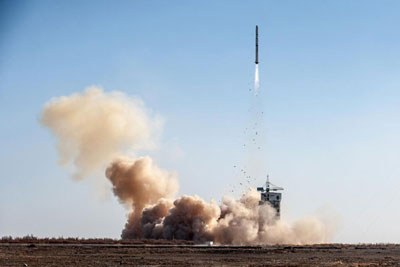 The Jiuquan Satellite Launch Center confirmed that China successfully launched the Yaogan XVI remote-sensing satellite into space at 12:06 am Sunday.
The Jiuquan Satellite Launch Center confirmed that China successfully launched the Yaogan XVI remote-sensing satellite into space at 12:06 am Sunday.
Nov 26th, 2012
Read more
 Subscribe to our Space Exploration News feed
Subscribe to our Space Exploration News feed
 The Jiuquan Satellite Launch Center confirmed that China successfully launched the Yaogan XVI remote-sensing satellite into space at 12:06 am Sunday.
The Jiuquan Satellite Launch Center confirmed that China successfully launched the Yaogan XVI remote-sensing satellite into space at 12:06 am Sunday.
Nov 26th, 2012
Read more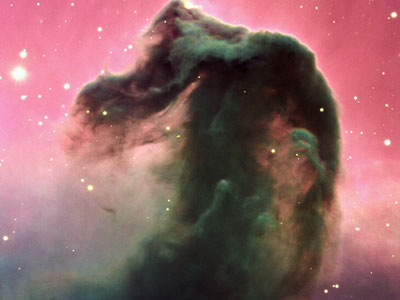 Using IRAM's 30m-telescope, astronomers find indications for vast petroleum reservoirs in the Horsehead Nebula.
Using IRAM's 30m-telescope, astronomers find indications for vast petroleum reservoirs in the Horsehead Nebula.
Nov 23rd, 2012
Read moreA team of scientists studied the hydrogen in water from the Martian interior and found that Mars formed from similar building blocks to that of Earth, but that there were differences in the later evolution of the two planets. This implies that terrestrial planets, including Earth, have similar water sources - chondritic meteorites.
Nov 22nd, 2012
Read moreThe mantles of Earth and other rocky planets are rich in magnesium and oxygen. Due to its simplicity, the mineral magnesium oxide is a good model for studying the nature of planetary interiors. New work from a team led by Carnegie's Stewart McWilliams studied how magnesium oxide behaves under the extreme conditions deep within planets and found evidence that alters our understanding of planetary evolution.
Nov 22nd, 2012
Read moreThe European Space Agency and EUMETSAT today signed the agreement on the Meteosat Third Generation weather satellite system at the ESA Ministerial Council in Naples, Italy.
Nov 22nd, 2012
Read more NASA has completed three key milestones in its development of new atmospheric deceleration technologies to support exploration missions across the solar system.
NASA has completed three key milestones in its development of new atmospheric deceleration technologies to support exploration missions across the solar system.
Nov 21st, 2012
Read moreMembers of European Space Agency (ESA) on Wednesday approved a multi-year budget of 10 billion euros ($12.3 billion), ESA director general Jean-Jacques Dordain said, hailing this as a 'big success'.
Nov 21st, 2012
Read more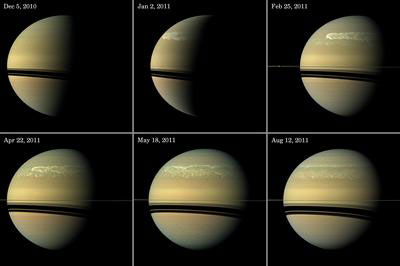 Astronomers have gotten a first look at the aftermath of Saturn's 'Great Springtime Storm' thanks to the heat-seeking capabilities of the international Cassini spacecraft and two ground-based telescopes. Even though the cosmic event is hidden to the naked eye, a giant oval vortex continues to exist long after the visible effects of the storm have subsided.
Astronomers have gotten a first look at the aftermath of Saturn's 'Great Springtime Storm' thanks to the heat-seeking capabilities of the international Cassini spacecraft and two ground-based telescopes. Even though the cosmic event is hidden to the naked eye, a giant oval vortex continues to exist long after the visible effects of the storm have subsided.
Nov 20th, 2012
Read more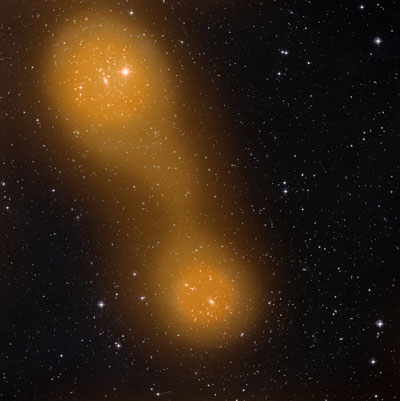 ESA's Planck space telescope has made the first conclusive detection of a bridge of hot gas connecting a pair of galaxy clusters across 10 million light-years of intergalactic space.
ESA's Planck space telescope has made the first conclusive detection of a bridge of hot gas connecting a pair of galaxy clusters across 10 million light-years of intergalactic space.
Nov 20th, 2012
Read more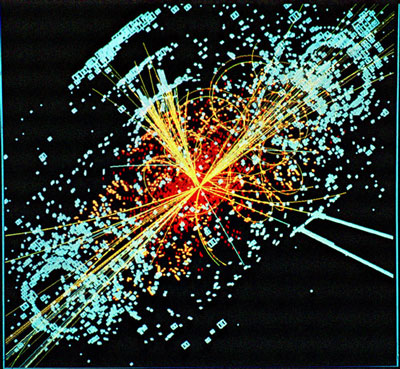 The search for a mysterious subatomic particle can certainly involve some enormous tools, not to mention a multitude of scientists. The effort to find the elusive "Higgs boson" includes over 5,800 scientists from 56 countries. It's a subatomic particle that gives other particles, such as quarks and electrons, their mass.
The search for a mysterious subatomic particle can certainly involve some enormous tools, not to mention a multitude of scientists. The effort to find the elusive "Higgs boson" includes over 5,800 scientists from 56 countries. It's a subatomic particle that gives other particles, such as quarks and electrons, their mass.
Nov 20th, 2012
Read more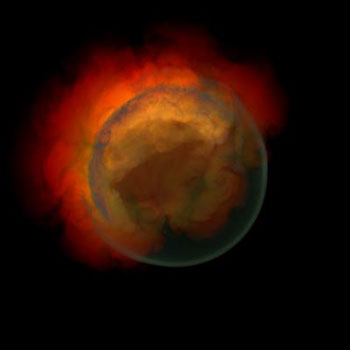 Supercomputer simulations have revealed that a type of oddly dim, exploding star is probably a class of duds - one that could nonetheless throw new light on the mysterious nature of dark energy.
Supercomputer simulations have revealed that a type of oddly dim, exploding star is probably a class of duds - one that could nonetheless throw new light on the mysterious nature of dark energy.
Nov 20th, 2012
Read more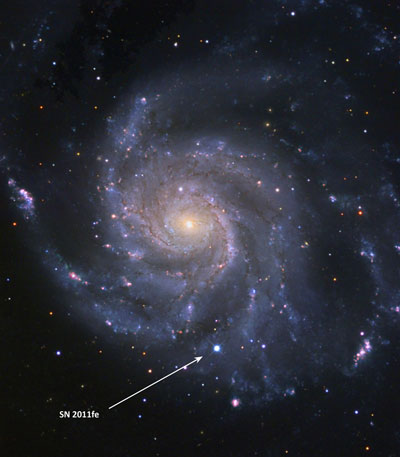 A study using a unique new instrument on the world's largest optical telescope has revealed the likely origins of especially bright supernovae that astronomers use as easy-to-spot "mile markers" to measure the expansion and acceleration of the universe.
A study using a unique new instrument on the world's largest optical telescope has revealed the likely origins of especially bright supernovae that astronomers use as easy-to-spot "mile markers" to measure the expansion and acceleration of the universe.
Nov 20th, 2012
Read more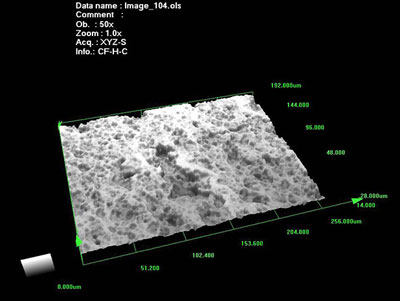 Outgassing - the physical process that creates that oh-so-alluring new car smell - isn't healthy for humans and, as it turns out, not particularly wholesome for sensitive satellite instruments, either. But a team of NASA engineers has created a new way to protect those instruments from its ill effects.
Outgassing - the physical process that creates that oh-so-alluring new car smell - isn't healthy for humans and, as it turns out, not particularly wholesome for sensitive satellite instruments, either. But a team of NASA engineers has created a new way to protect those instruments from its ill effects.
Nov 20th, 2012
Read more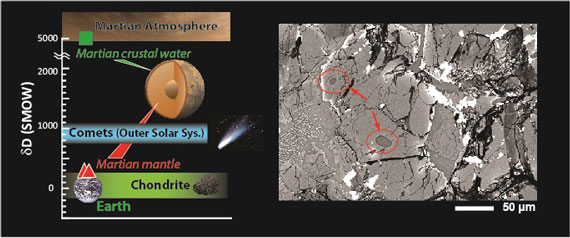 Researchers at the Tokyo Institute of Technology, NASA's Johnson Space Center, Lunar Planetary Institute, and Carnegie Institute of Washington report on geochemical studies that help towards settling the controversy that surrounds the origin, abundance, and history of water on Mars.
Researchers at the Tokyo Institute of Technology, NASA's Johnson Space Center, Lunar Planetary Institute, and Carnegie Institute of Washington report on geochemical studies that help towards settling the controversy that surrounds the origin, abundance, and history of water on Mars.
Nov 20th, 2012
Read more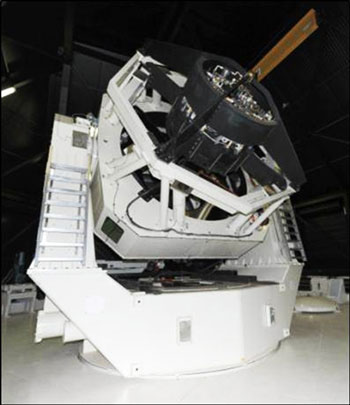 DARPA's ground-based Space Surveillance Telescope may soon head to Australia. An agreement reached this week with Australia's Department of Defense will allow DARPA to take the 180,000 lb. three-mirror Mersenne-Schmidt telescope to Australia to track and catalogues space debris and objects unique to the space above that region of the world that could threaten DoD satellites.
DARPA's ground-based Space Surveillance Telescope may soon head to Australia. An agreement reached this week with Australia's Department of Defense will allow DARPA to take the 180,000 lb. three-mirror Mersenne-Schmidt telescope to Australia to track and catalogues space debris and objects unique to the space above that region of the world that could threaten DoD satellites.
Nov 19th, 2012
Read more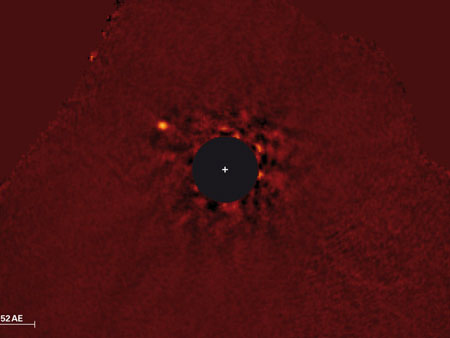 A discovery in the Andromeda constellation sheds new light on the birth of planets. The gas giant has roughly 13 times the mass of Jupiter, while the parent star has 2.5 times the mass of the Sun. This planet probably formed in a similar way to ordinary, lower-mass planets: in a 'protoplanetary disk' of gas and dust. This makes the planet an important test case for current models of how planets are born.
A discovery in the Andromeda constellation sheds new light on the birth of planets. The gas giant has roughly 13 times the mass of Jupiter, while the parent star has 2.5 times the mass of the Sun. This planet probably formed in a similar way to ordinary, lower-mass planets: in a 'protoplanetary disk' of gas and dust. This makes the planet an important test case for current models of how planets are born.
Nov 19th, 2012
Read moreIn space research, the Finnish Meteorological Institute specialises in large-scale computer simulations modelling the behaviour of particles and electromagnetic fields in the vicinity of Earth and other bodies in the solar system. Simulation models are used, for example, to study processes involved in the origin of auroras.
Nov 19th, 2012
Read more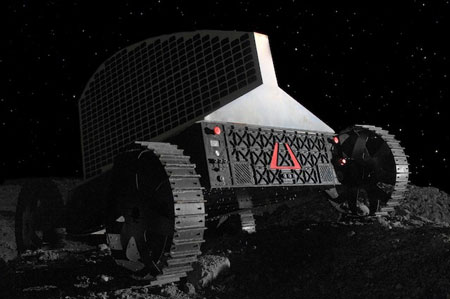 The American space program stands at the cusp of a "water rush" to the moon by several companies developing robotic prospectors for launch in the near future, according to a NASA scientist considering how to acquire and use water ice believed to be at the poles of the moon.
The American space program stands at the cusp of a "water rush" to the moon by several companies developing robotic prospectors for launch in the near future, according to a NASA scientist considering how to acquire and use water ice believed to be at the poles of the moon.
Nov 18th, 2012
Read more